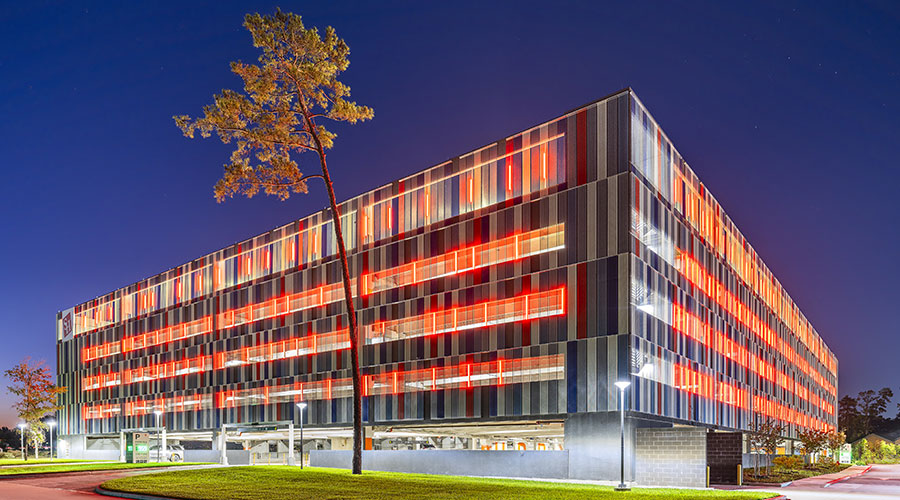Making An Advanced System Stellar
But what do you get the guy that already has everything: the best direct/indirect fixtures, the right CFL/LED downlights, vacancy sensors and a professionally laid out system?
You start by checking if the light levels are task-appropriate. Some of the fanciest lighting designs are overlit for the work being performed in them. In one case, too many beautiful T5 fixtures were installed in a high-end financial office, resulting in light levels so high that the traders could not read their computer screens. It's also not surprising to find corridors bright enough for surgery when a level half as bright would nicely show off the fancy artwork on the walls. A check of lighting power densities against California Title 24 or ASHRAE 90.1-2007 may find other spaces that need to go on a wattage diet.
Control opportunities are also often missed: Library stacks may lack sensors to drop levels or shut off fixtures when unoccupied. Wireless sensors running on photovoltaic power may cut the cost of such limited area control. A fully lit atrium could get a daylight sensor to dim fixture output while maintaining a lit appearance. Bi-level switching may be added to classrooms (and is now a code requirement in some areas). Perimeter fixtures along windowed walls may benefit from daylight dimming. Work spaces illuminated solely by overhead fixtures may cut that light level by almost half by adding LED task lights controlled by desktop occupancy sensors. Using addressable ballasts and software, overhead lighting becomes controllable by occupants sitting below them.
New Technology
As the smart grid comes knocking at the door, new opportunities are right behind it. Several ballast suppliers now offer "demand response" (also called "load shedding") ballasts that, through power line or radio-based control, allow gradual automated dimming in response to a call from the utility for temporary demand reductions. While energy savings during demand-response calls may be small (because such calls may occur for less than 50 hours a year), year-round rate reductions or hefty payments of $1.00 per avoided kilowatt-hour may be available for those able to cut their load on call. When linked with an appropriately programmed building management system, such partial dimming (about 33 percent) may be employed to flatten a building's load profile, cut peak demand (and the charges that go with it), and secure better pricing for deregulated power, where available.
The lighting industry continues to amaze even those who have been in the business for decades. Even as advances are made, new competing light sources are appearing with names that read like science fiction: e.g., electron stimulated luminance or light emitting plasma. Regardless of where one has journeyed on the path to save via lighting efficiency, it's always worth taking the next step. There's usually another surprise just around the bend.
Lindsay Audin, CEM, LEED AP, CEP, is president of EnergyWiz, an energy consulting firm based in Croton, N.Y. He is a contributing editor for Building Operating Management. He can be reached at energywiz@aol.com.
Making Upgrades Even Better: Advanced Upgrade
Original plan: The best direct/indirect fixtures, CFL/LED downlights, vacancy sensors, and a professionally laid out system
Extra steps that could pay off:
- Reduce illumination levels in overlit spaces
- Find additional control opportunities, possibly using wireless systems
- Use task-ambient lighting with LED task lights
- Provide lighting control for individual workstations
- Load-shedding ballasts for demand-response applications
|
Related Topics:













